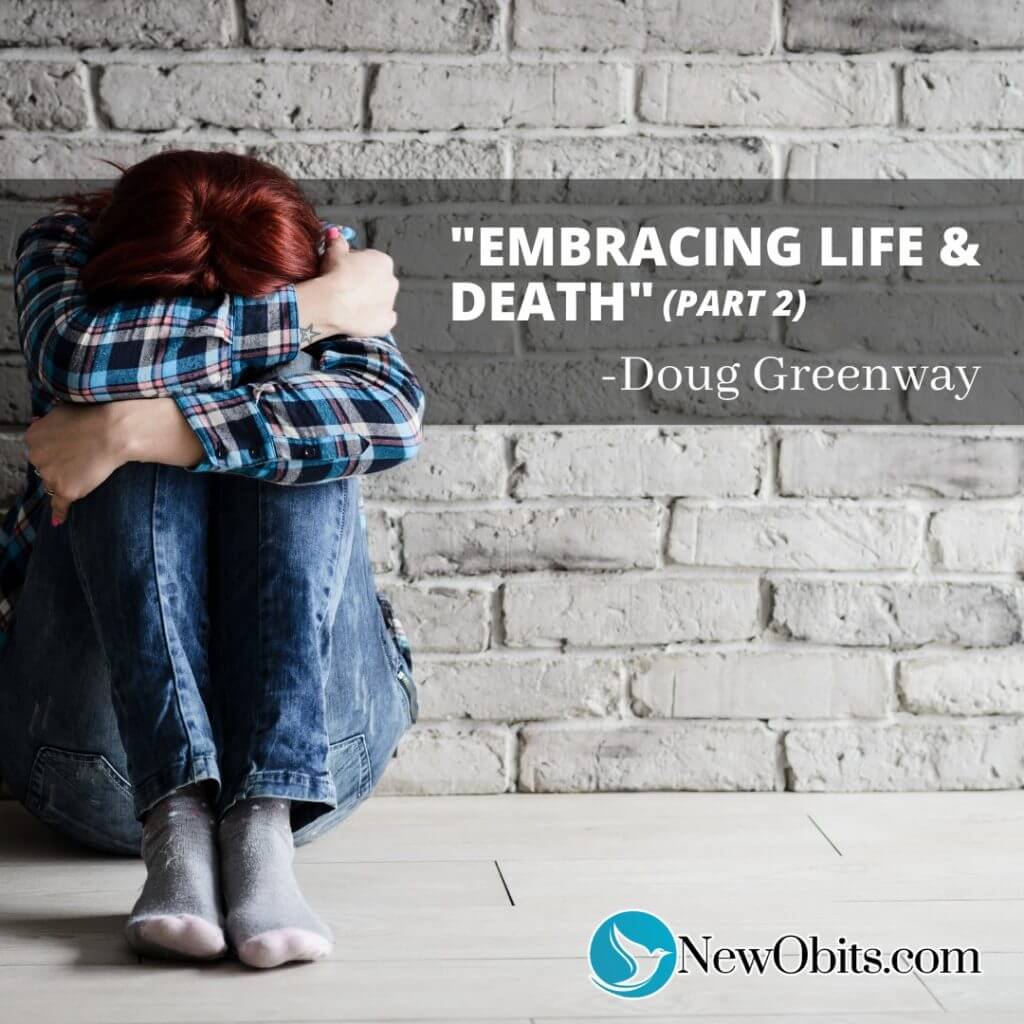
In our last blog, we introduced this idea:
(1) the goal of spending our time on earth wisely.
(2) We must also remember that there is more to enjoy BEYOND death than there is prior to it!
Get in a quiet place and read Psalm 23 with a view to the hereafter and the here.
Psalm 23:4 (ETRV)
4 Even if I walk through a valley as dark as the grave, I will not be afraid of any danger, because you are with me. Your rod and staff comfort me.
Death is just a gateway to our eternal existence. Robert Frost said, “Hope does not lie in a way out, but in a way through!”
Most of my blogs are more counselor talk than preacher talk or educator talk. But, here we go with the preacher talk…. Here is my personal conviction. “The Lord Jesus Christ is the best way through life, and He gives us the courage to face death!”
(3) A third thought today… Life is full of losses and grief is the natural human mechanism to cope with loss.
When someone is experiencing grief, usually there are signs that can be read. If you would consult jewishencyclopedia.com and search for “mourning” — here is some of what you would find…
“It is recorded that Abraham mourned for Sarah (his wife) and wept for her (Gen. xxiii. 2). Jacob mourned “many days” for the supposed death of Joseph. David lamented for Absalom, in spite of the latter’s ill conduct. The mourning for an only son was profound (Amos viii. 10).
The manner of mourning differed according to the degree of the loss and distress connected with it. The Gentile captive mourned for her parents by remaining within the house, weeping, cutting off her hair, and paring her nails, abundant hair, and long nails being considered marks of feminine beauty; whereas among men, during mourning, the hair and nails were allowed to grow. Mourning was also marked by throwing dust on the head (Josh. vii. 6), by wearing sackcloth, sitting in ashes, lacerating the flesh, and tearing out the hair of the head and face (Jer. xvi. 6). Such self-mutilation, however, was forbidden by Moses (Lev. xxi. 5; Deut. xiv. 1). Other forms of mourning are indicated in Ezek. xxiv. 17, as (1) crying, (2) removing the head-dress, (3) removing the shoes, (4) covering the lips as a guard of silence, (5) eating “the bread of mourners” (Hos. ix. 4).
Sometimes words are not enough; sometimes they are too much! A load shared is a load lifted! Just show up! The power of personal presence is amazing! Sympathy, empathy, a touch, and a prayer.
Here’s your homework: “What does it mean to embrace life and death?” This last event is coming.

Doug Greenway
These blog articles are written by the retired minister and former educator and counselor, Doug Greenway. He'd love to hear from you with your comments, questions, or suggestions for future topics. You may reach Doug at doug_greenway@yahoo.com.
